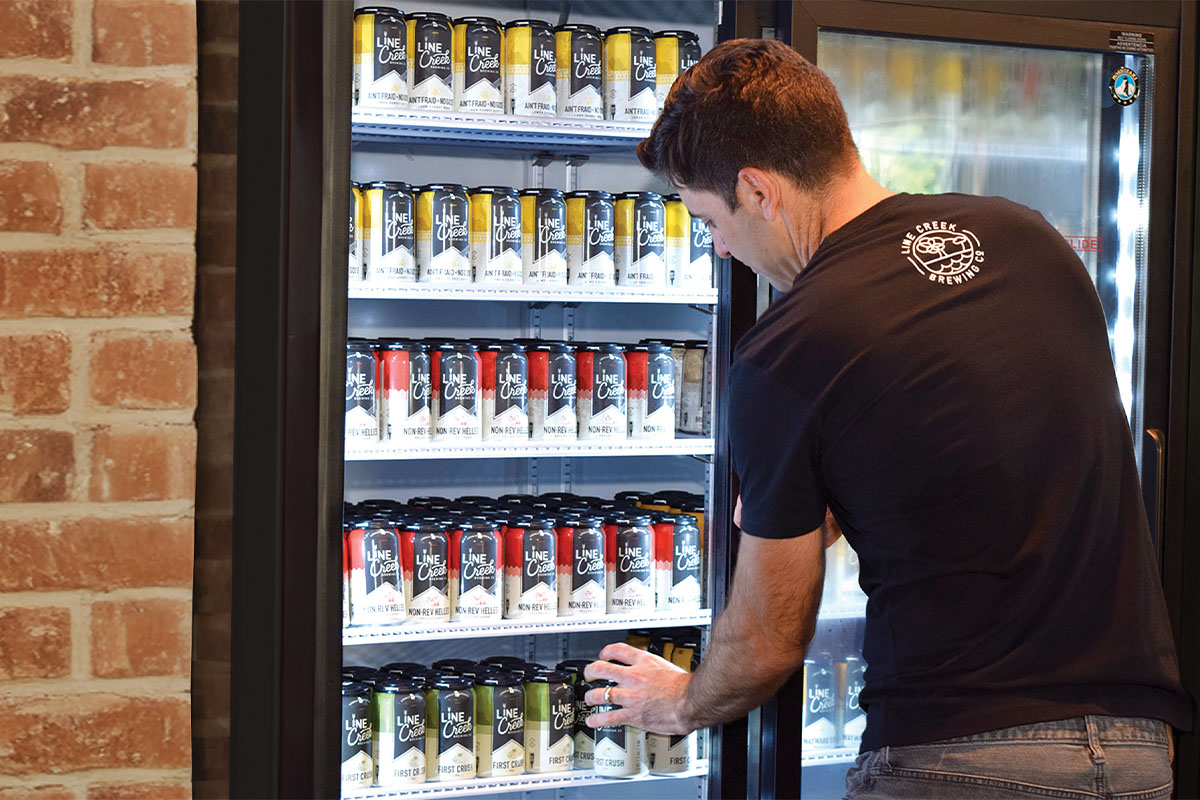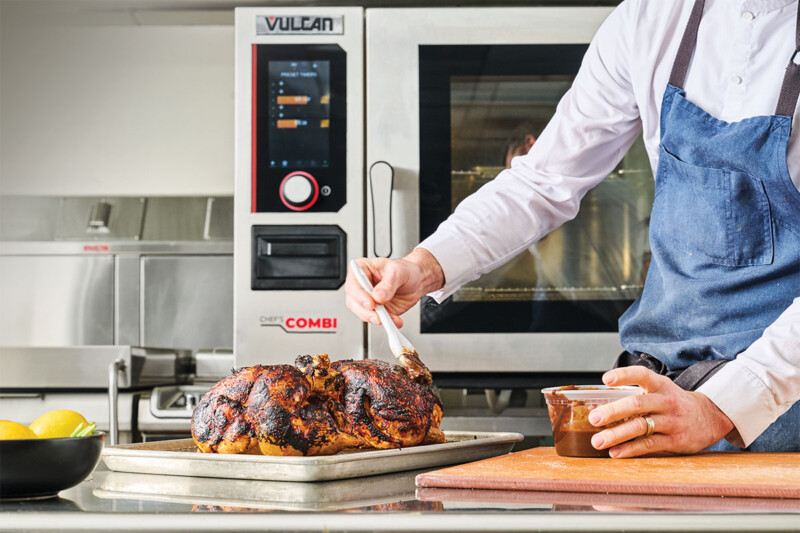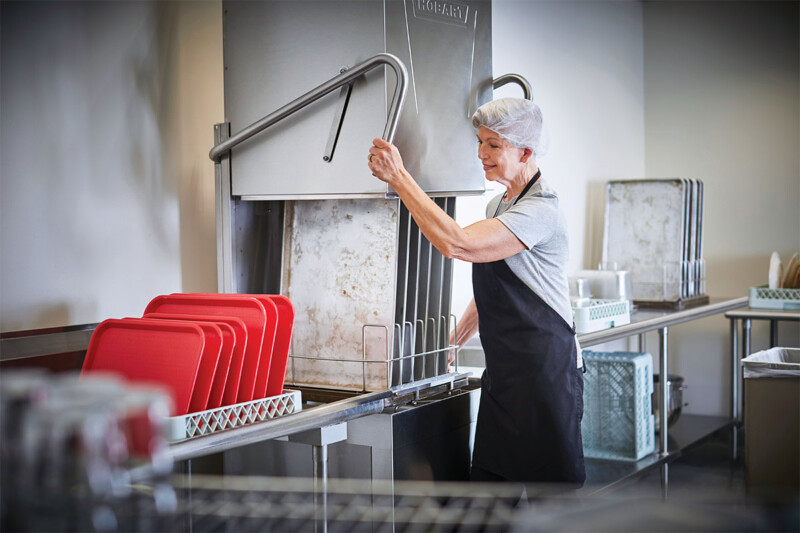Making the Case: Choosing A Refrigerated Merchandiser
Manufacturers of refrigerated merchandisers grow units’ abilities and appearances, adapting to customers’ newer preferences.
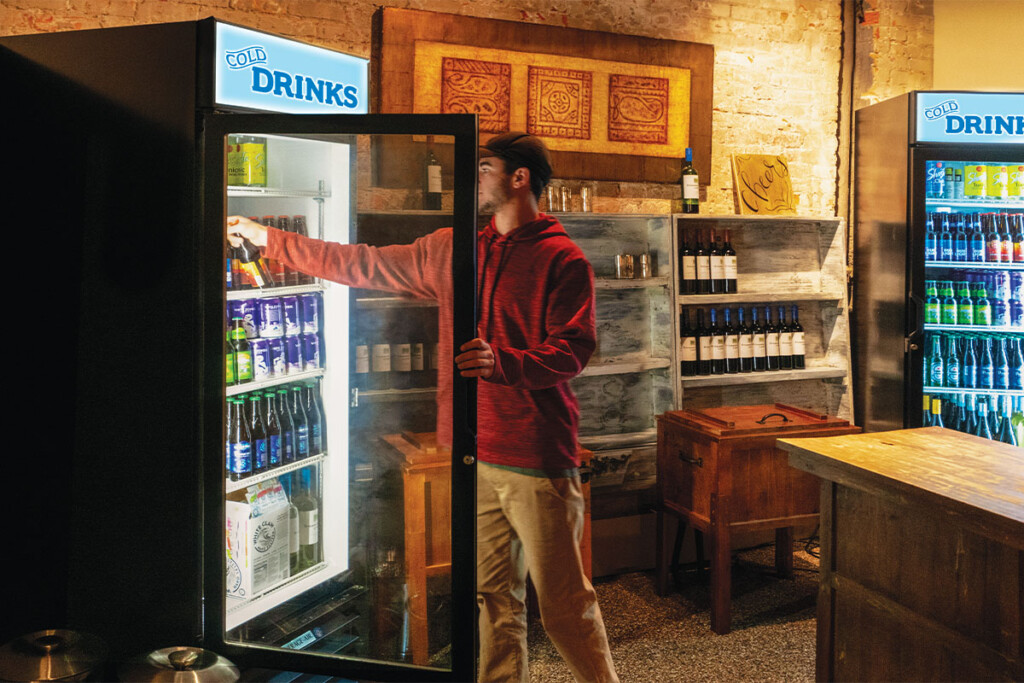
Refrigeration, a staple in back-of-house equipment lineups, is increasingly making its way up to the front-of-house due to changing consumer habits and a growing demand from operators.
One of the biggest trends in restaurants over the past few years is the rise in off-premise dining. According to TouchBistro’s “The State of Restaurants in 2024” report, restaurants reported doing 23% of their business through online ordering platforms, and 46% of respondents plan on adding more off-premise options as a way to boost revenue. Refrigerated merchandisers offer a way to keep food close to the door, convenient for pickup or delivery drivers, without interrupting operations in the kitchen.
Grab-and-go items also are becoming more common at a variety of foodservice operations. Whether offering juices, energy drinks and alcoholic beverages, or displaying premade sandwiches and desserts for customers to add to their order, refrigerated merchandisers highlight the products while keeping them at safe temperatures. Manufacturers are stepping up to answer the growing demand by offering more options in terms of sizes, colors and features.
Automation has come to the refrigerated merchandising category, adding a new level of convenience and the possibility of increased sales.
Adding Avenues of Flexibility
Designed to keep cold foods cold, today’s refrigerated merchandisers do that and more. Whether you’re looking for equipment to hold meals for off-premise dining or wanting to display a variety of options for grab-and-go, the wide variety of products demand a flexibility in temperature control. As such, one manufacturer’s merchandiser combines both refrigerated and heated displays in one vertical case.
Another manufacturer designed a merchandiser that can be set anywhere from 40°F to -15°F at half-degree intervals, providing the ability to hold different products at just the right temperature. The precision temperature is accomplished by using a variable speed compressor. “This product’s unique temperature set point allows operators to hold something at an in-between state, such as milkshakes or wine slushies, at just the right temperature,” they explain. “It’s a great feature for products of certain consistencies that need to stay cold enough not to melt, yet not so cold they freeze through.”
It’s not just temperatures that provide flexibility in the refrigerated merchandiser category. Functionality has seen improvements as well, with the introduction of a pass-thru merchandiser that brings improved efficiencies to the kitchen. Food can be prepared in the kitchen and put directly in the merchandiser for customer pickup, and/or staff can replenish product without having to walk around, saving time and steps.
The type and amount of product going in a merchandiser helps drive the unit size as well as temperature control demands. Courtesy of Hoshizaki.
Attention-Grabbing Aesthetics
For impulse purchases and attracting the attention of grab-and-go consumers, operators can look to elevated design features offered by many manufacturers of refrigerated merchandisers. Just in the past few years, the choices of colors and customization has grown to a myriad of options. Interiors that used to be standard white now have the option for black as well, with LED lights to highlight the products.
The opportunities for the exterior are practically limitless. Some manufacturers now offer powder coat finishes in a wide variety of colors. In addition to paint, decals, logos and other images can be imposed on the merchandisers, both interior and exterior, thanks to vinyl printing offerings. “Merchandisers are a way to elevate your space by both blending in with the design and enhancing your brand,” says one manufacturer. “Customization is important in this market, where everyone is looking for a way to differentiate their operation.”
Having product front and center is another way to grab customers’ attention. Look for shelving options that push products such as bottled beverages to the front as items are pulled out for purchase. One manufacturer focused on beverage merchandising has designed a flexible shelving system that can be set at different intervals depending on the product being displayed. This allows operators to accommodate different sizes, from energy drinks to large water bottles, while keeping things organized and clean. The system is easily integrated into refrigerated merchandisers from assorted manufacturers.
Integrating Technology
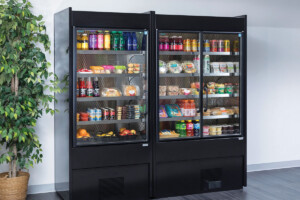
Automated merchandisers enable certain operators to add sales during off-hours. Courtesy of Structural Concepts.
Automation has come to the refrigerated merchandiser category, adding a new level of convenience and the possibility of increased sales. One manufacturer recently introduced a line of refrigerated merchandisers that contains a self-checkout feature, allowing customers to browse products on the shelf, add the selection to their cart and then pay with a credit/debit card for a contactless shopping experience. Foodservice operations at universities, healthcare settings and corporate locations can use this option to provide food during off-hours, but it also could be an option for certain types of restaurants to add incremental sales.
Making the Right Choice
Three factors play a part in guiding the purchase of a refrigerated merchandiser. The first is the type and amount of product to be displayed. This helps determine not only the size of unit needed, but also whether to look for flexibility in temperature control or units with combination options of hot and cold or the flexibility to switch from refrigerator to freezer mode.
Next, take into consideration the total cost of ownership. Factor in projected energy costs over time and maintenance requirements when looking at the price of equipment.
And finally, pay attention to where the refrigerated merchandiser will be installed. One manufacturer suggests using the 5/10/15 rule for optimal efficiency:
• 5 feet away from an exterior window, as direct sunlight increases the heat load on the front of the case.
• 10 feet away from HVAC ceiling vents.
• 15 feet away from exterior doors.
From improved food quality for off-premise customers to attention-grabbing displays for incremental sales, the newer options available in refrigerated merchandisers can help
elevate your foodservice operation’s performance.
Frigid Fit
Narrow your search with this overview of seven suppliers’ newest refrigerated merchandisers.
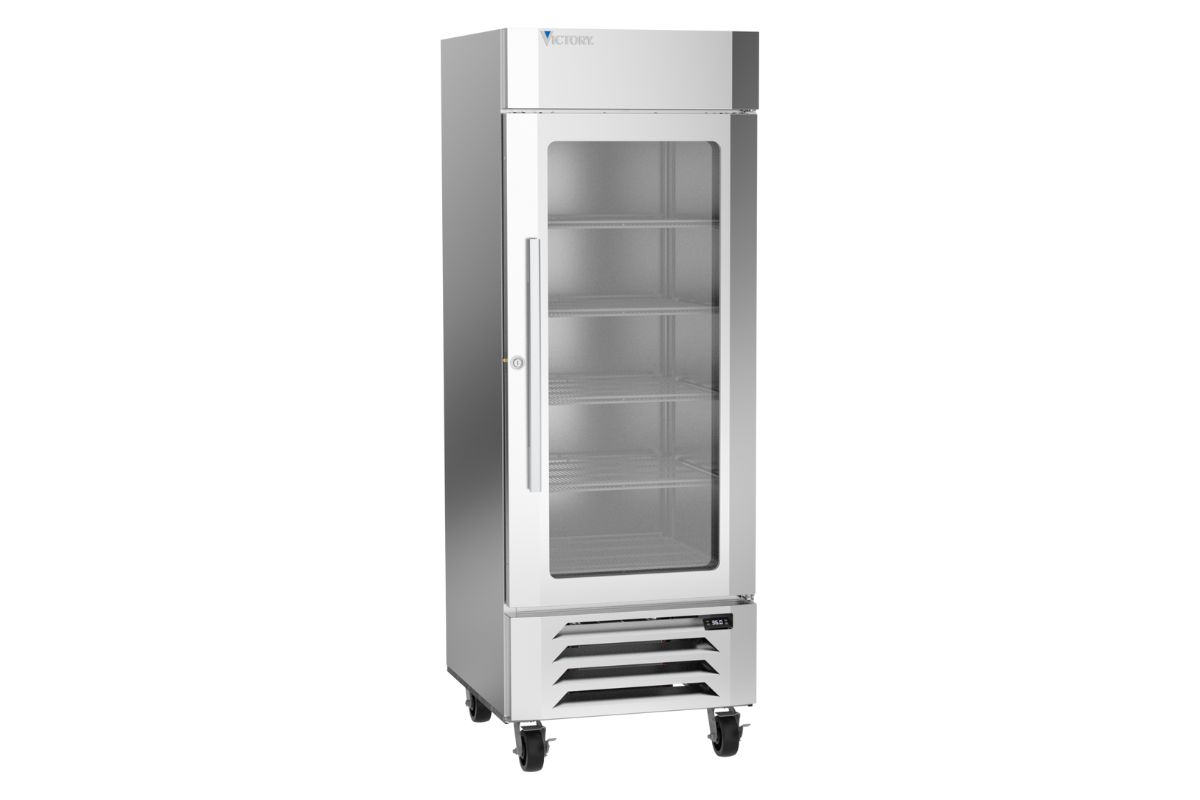
Victory
Model: LSR27HC-1
Refrigerant: R290
Details: This unit has an updated airflow design—A stay-open door, one-piece, snap-in magnetic door gasket and adapt defrost add ease of use.
Website: victoryrefrigeration.com
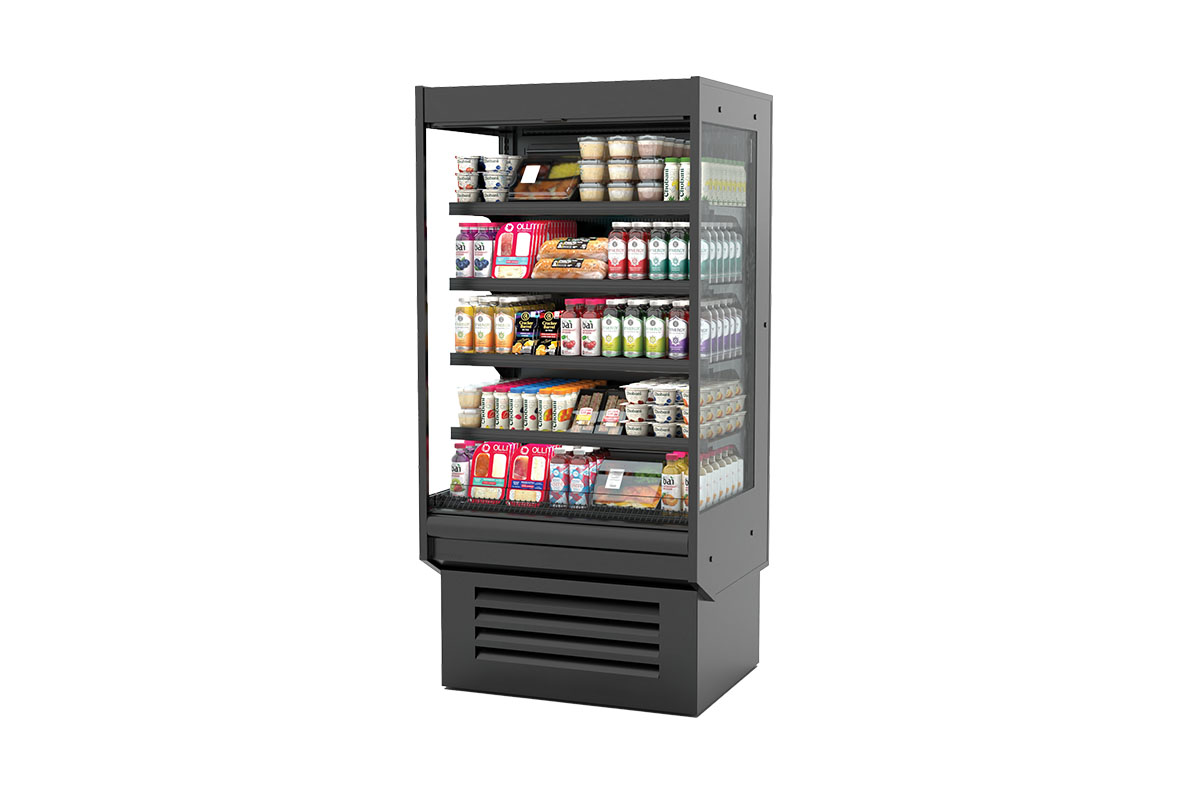
Hussmann
Model: S5S3S
Refrigerant: R290
Details: Pack product across five levels, with the top four shelves being adjustable. The unit runs quietly and efficiently, and includes one row of LED canopy lighting, a black interior and a solar digital thermometer. A five-year coil warranty also is included.
Website: hussmann.com
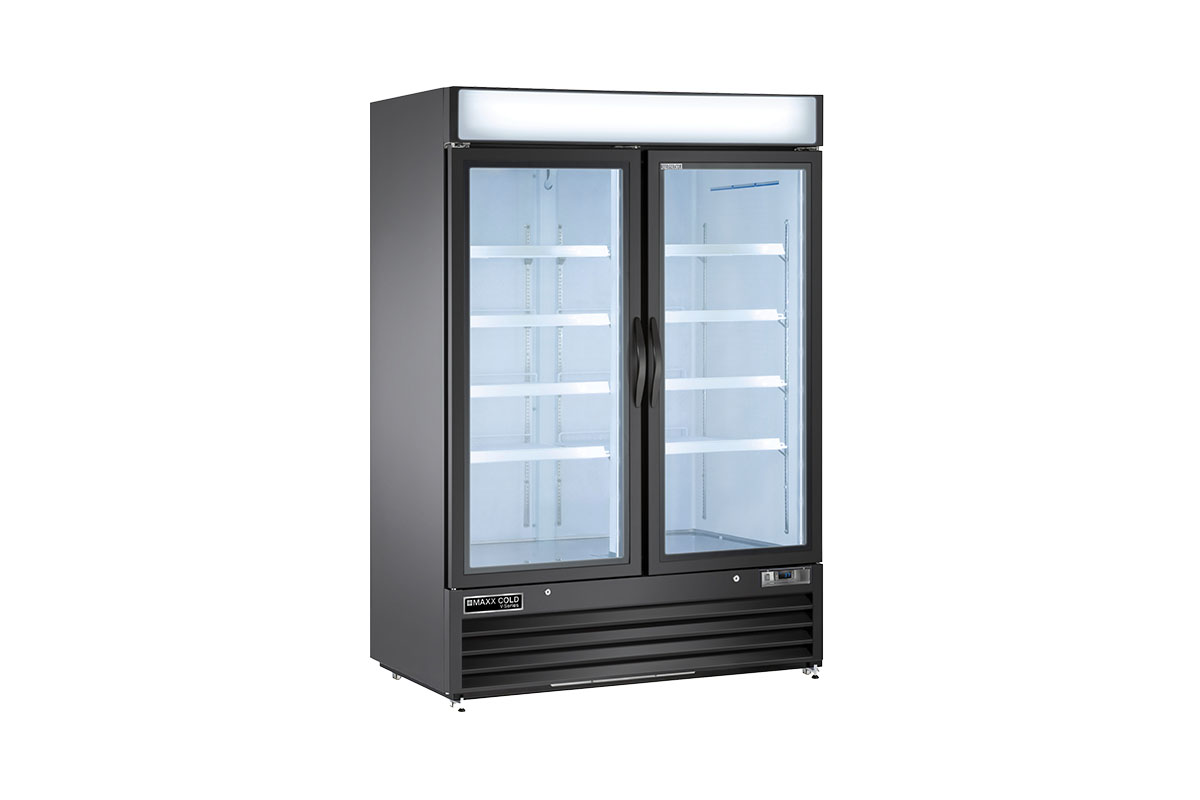
Maxx Cold
Model: V-Series (MVMR48B)
Refrigerant: R290A
Details: This unit offers easy cleaning, with an accessible bottom mounted compressor, plus an automatic defrost system, digital temperature controls and more. The eight heavy-duty shelves are adjustable.
Website: maxx-cold.com
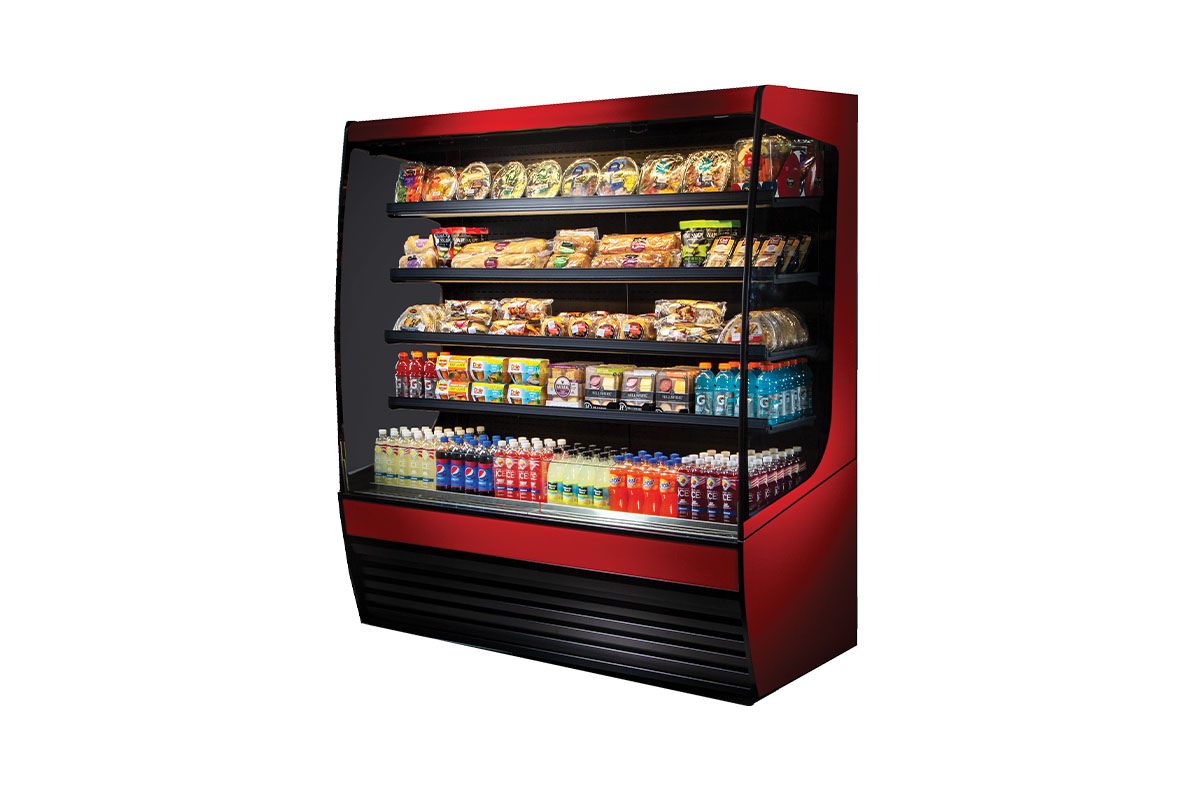
Federal Industries
Model: VRSS7278C
Refrigerant: R449a
Details: The maker’s refrigerated models come in the same heights as non-refrigerated and heated cases for continuous lineups. Consider options including LED lights below shelves, a self-cleaning condenser, a front-facing wire display basket and more.
Website: standex.com/businesses/federal-industries/
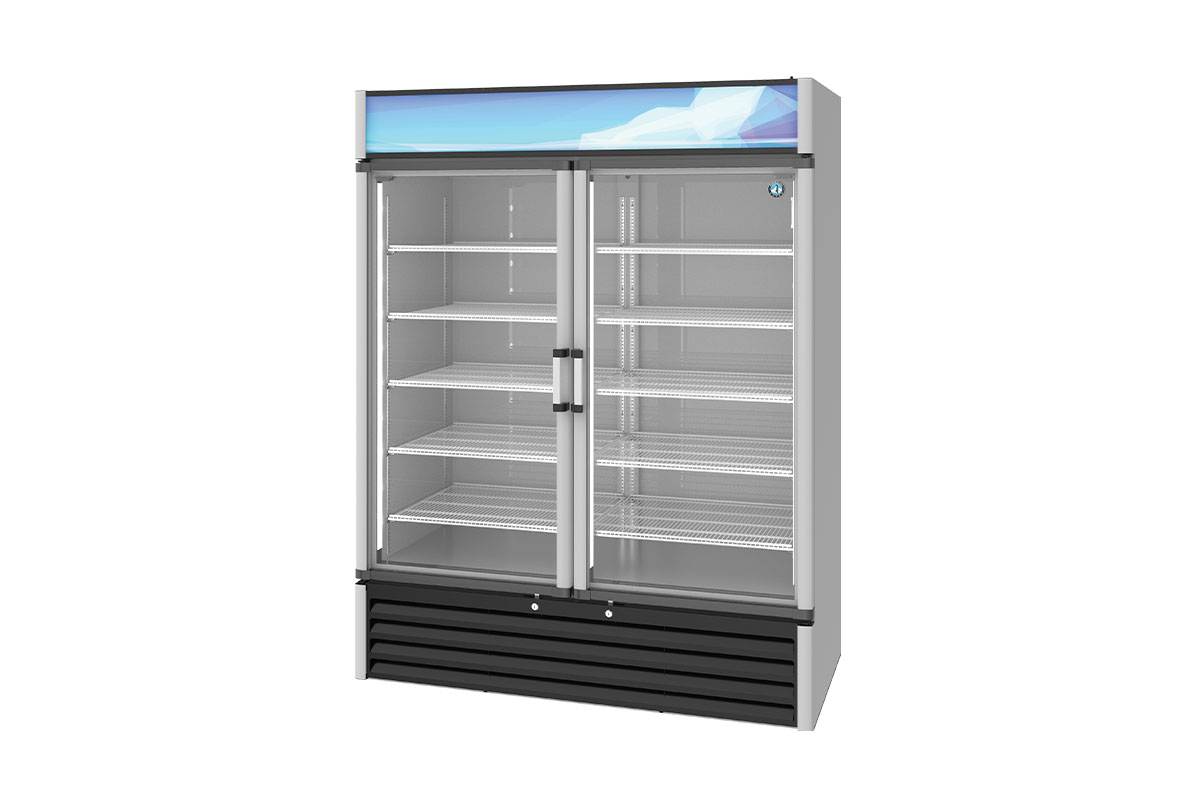
Hoshizaki
Model: RM-49-HC
Refrigerant: R290
Details: Choose from three exterior finishes (silver, white or black). The forced air evaporator ensures quick temperature adjustments, and an energy-saving gas loop on the front edge prevents condensation.
Website: hoshizakiamerica.com
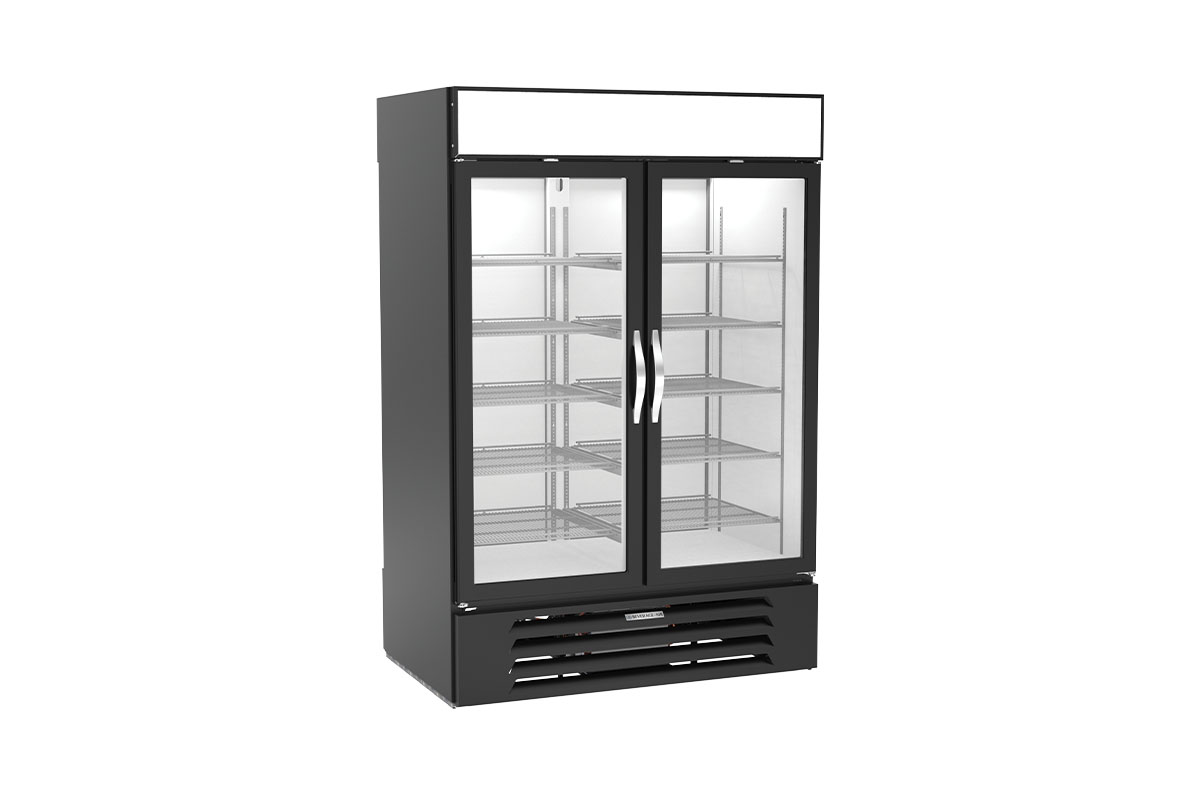
Beverage-Air
Model: Marketmax Series (MMR49HC-1-B-PT)
Refrigerant: R290
Details: This pass-thru unit lets staff easily access and stock goods across 10 shelves, with black or white shelving options. The self-closing doors have a 120-degree stay-open feature.
Website: beverage-air.com
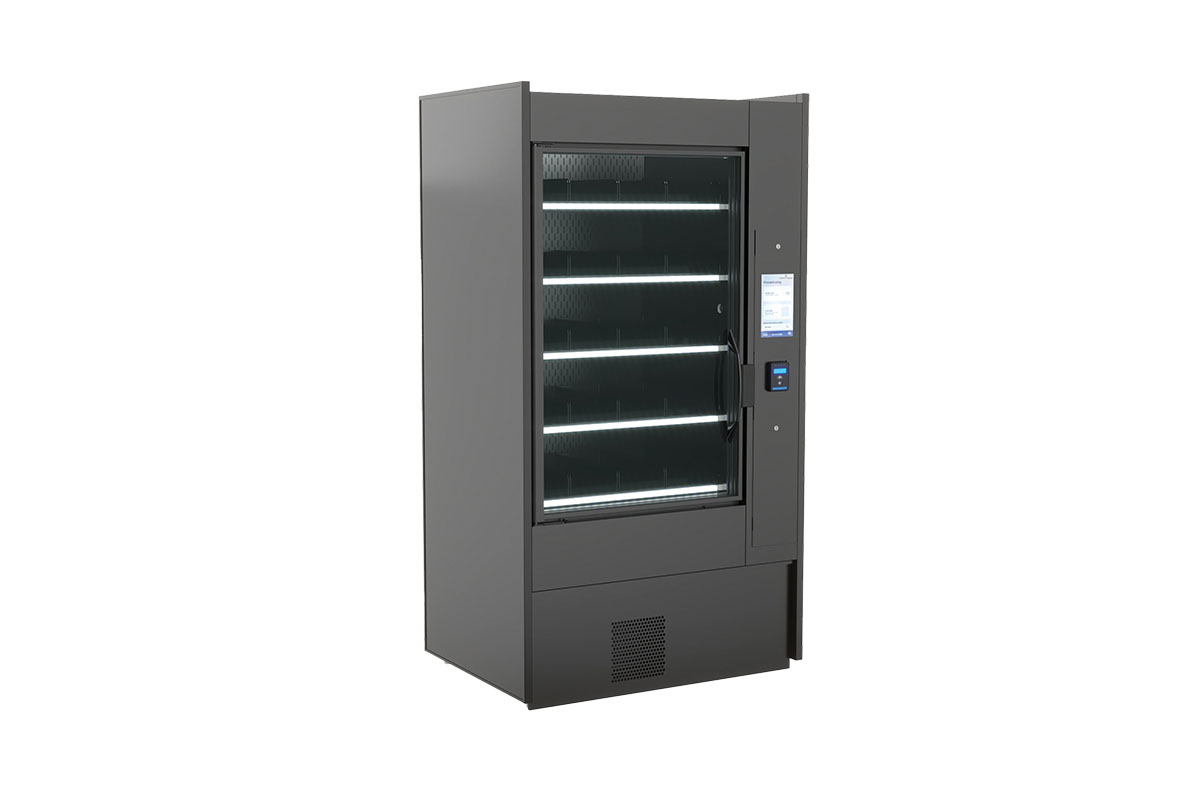
Structural Concepts
Model: Elevate
Refrigerant: R290
Details: LED lights help draw attention to this autonomous unit, complete with self-checkout. The unit features five metal shelves, and shelves are removable/adjustable.
Website: structuralconcepts.com
Editor’s note: All featured models have been released or updated since February 2019.
RELATED CONTENT
- Advertisement -
- Advertisement -
- Advertisement -
TRENDING NOW
- Advertisement -
- Advertisement -
- Advertisement -

